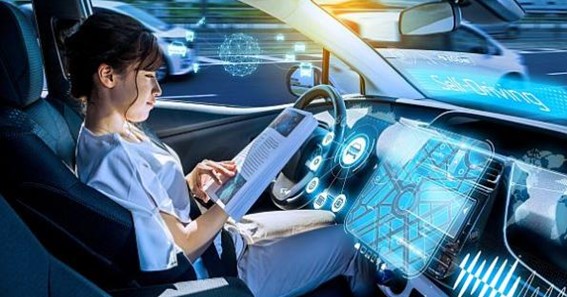Drivers monitor systems are enhancing safety measures that track driver distraction. This happens with the help of a camera positioned on the dashboard. They also provide a warning to refocus the driver’s attention on the task at hand. They are projecting to become standard equipment in new cars. This is because of regulatory and rating agency regulations.
Distracted Driving Accident
A distracted driving accident can come in many forms, but cell phone use while driving is one of the most common distractions. Texting and checking social media accounts has become a popular pastime for drivers everywhere, causing people to be more distracted behind the wheel than ever before. All it takes is that brief moment of inattentiveness to cause a serious accident.
How Do Driver Monitor Systems Work?
They use a driver-facing camera with an infrared light-emitting diode. Even at night, they can “see” the driver’s face. They can also see the eyes even if the driver is wearing sunglasses. Advanced onboard software takes data from the driver. It establishes a baseline for the driver’s typical alert state.
After that, the software can tell if the driver is blinking more than usual. It may also tell if the driver is paying attention to the road ahead of them. Levels 3 and 4 autonomous driving need the use of driver-monitoring systems. At specific points along the journey, drivers must re-engage and be ready to control the car. Driver monitoring is essential for ensuring that the driver is aware and focused. Drivers will be able to use their eyes or gestures to control operations. By incorporating a wide-angle camera that provides a better view of the vehicle’s inside.
How They Keep You Safer on the Road
Ways that in-cabin driver monitoring may help you stay safer on the road.
Detecting Drowsiness
It’s tough to overlook the consequences of drowsy driving. Drowsy driving handles 6,000 fatal collisions each year. One in every twenty-five adults aged 18 and up has acknowledged dozing off behind the wheel.
Early detection of tiredness ensures that the driver’s attention is at the level required for safe vehicle operation. Changes in blink rate and yawning can detect early signs of fatigue.
Click here – SEO strategies in 2022: all the keys to improving your positioning
Preventing Texting
Texting, like driving, has become a habitual everyday action. And, in the vast majority of circumstances, a single text is completely innocuous. While texting and driving is the top cause of death among teenagers, the risks are universal. Cell phone usage handles 27% of all car accidents. There are many hard-hitting statistics, policies, and public service announcements. Many drivers are unable to resist the temptation to text while driving.
With artificial intelligence, we intend to assist drivers in combating this impulse.
They take many factors, like cell phone detection, into account when determining if the driver is texting. By discovering texting, the system can alert the motorist to the fact that they are texting; with AI’s help, the driver will altogether quit the habit.
Intervention Using Distractions
Most diversions have less evident risks than others. It only takes 5 seconds to traverse the length of a football field when you take your eyes off the road. The system can then take the necessary safety measures, such as having the automobile take control.
AI can detect various indications of distraction. This can assist in refocusing a driver’s attention back on the road. Intelligent driver monitoring technologies are changing the future of vehicle safety. This is happening because artificial intelligence will not be able to eradicate all risks on the road. We can’t afford to put the brakes on when finding new approaches to increase driving safety.
Click here – Ways to Lower Your Water Bill





